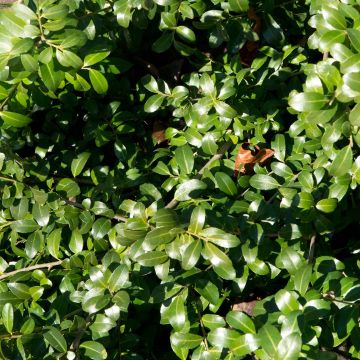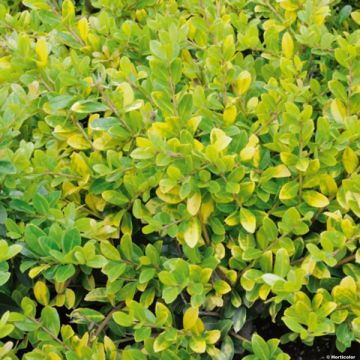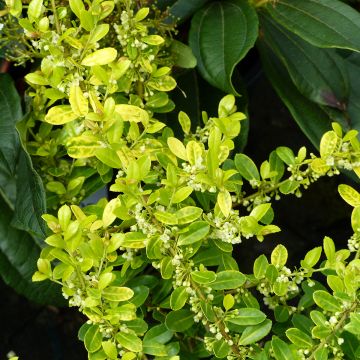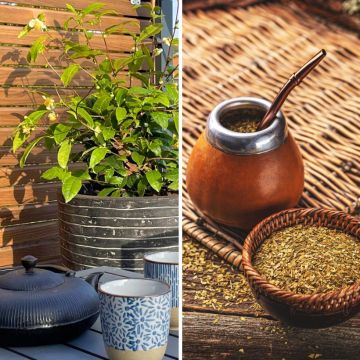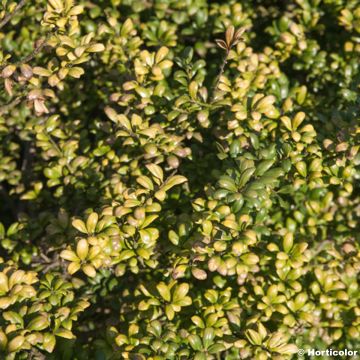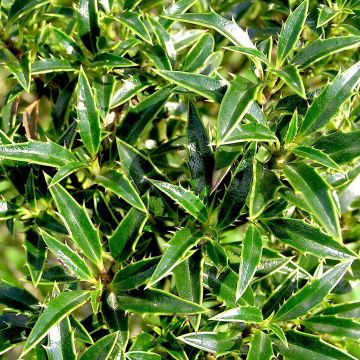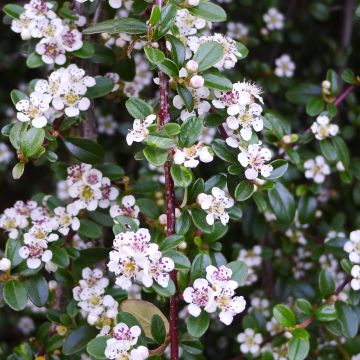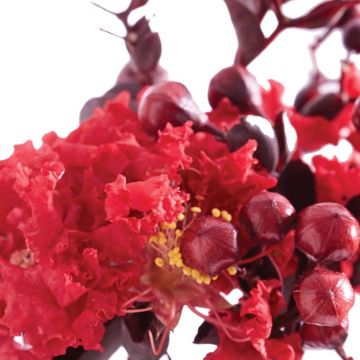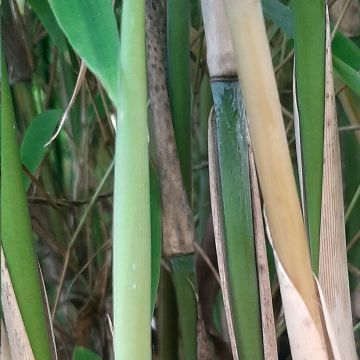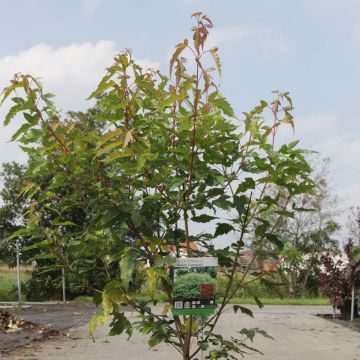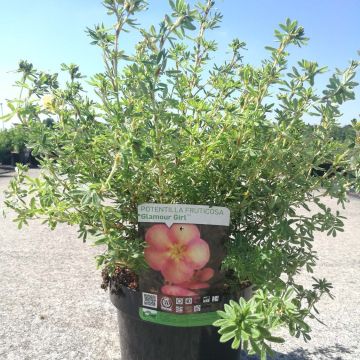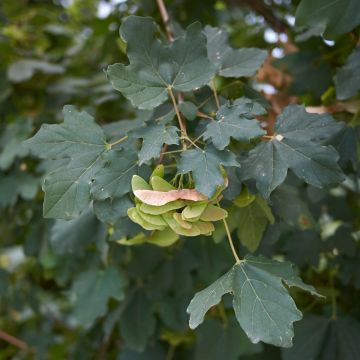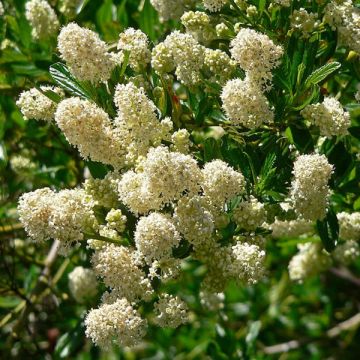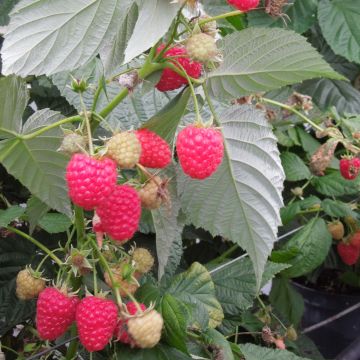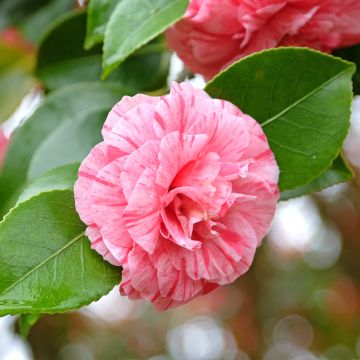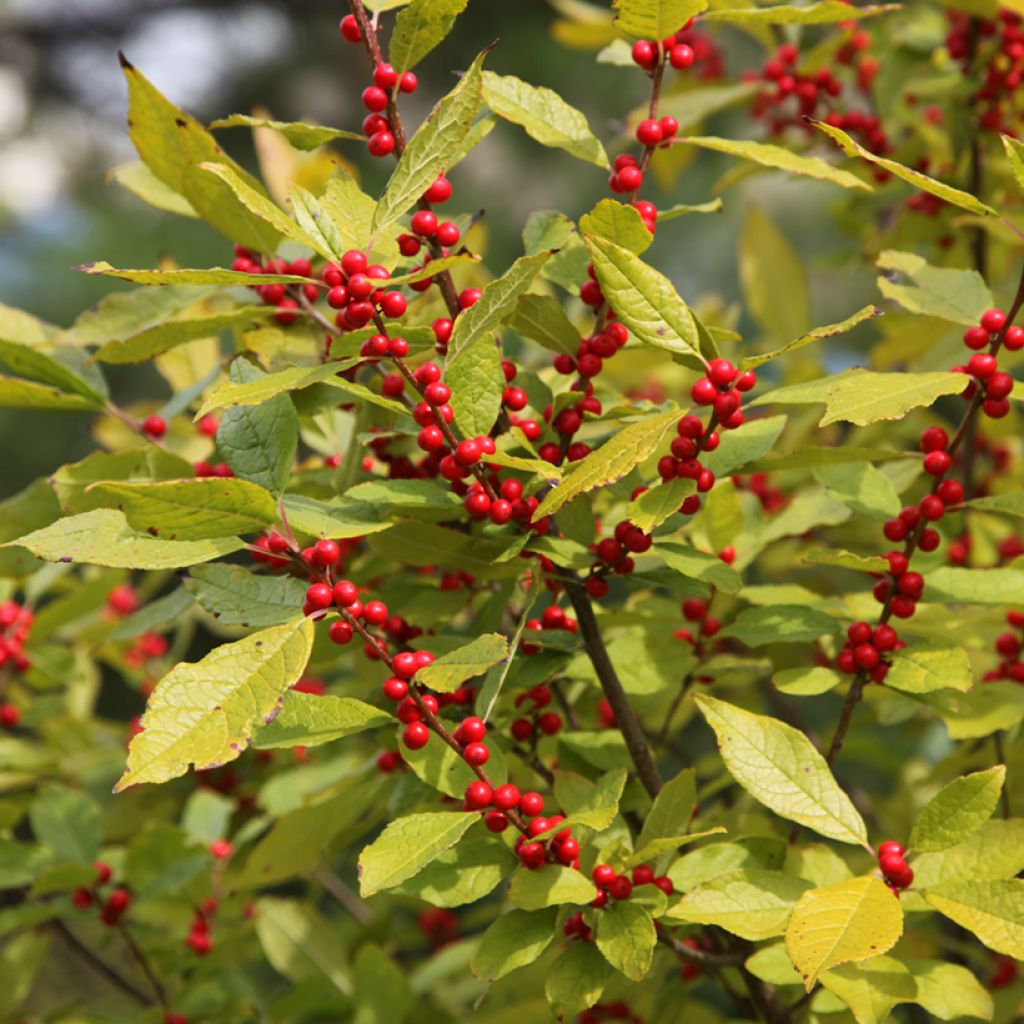

Ilex verticillata Oosterwijk - Winterberry
Ilex verticillata Oosterwijk - Winterberry
Ilex verticillata Oosterwijk
Winterberry, Black Alder, Michigan Holly
This item cannot be shipped to the selected country
Delivery charge from €5.90
More information
Delivery charge from €5.90
More information
Schedule delivery date,
and select date in basket
This plant carries a 24 months recovery warranty
More information
We guarantee the quality of our plants for a full growing cycle, and will replace at our expense any plant that fails to recover under normal climatic and planting conditions.
From €5.90 for pickup delivery and €6.90 for home delivery
Express home delivery from €8.90.
Does this plant fit my garden?
Set up your Plantfit profile →
Description
The Ilex verticillata 'Oosterwijk' is a female variety of winterberry holly, known for its abundant bright red fruiting that enhances the garden until the end of winter on its bare branches. Native to Canada and the northeastern United States, this holly is extremely hardy. Its leaves, which fall in autumn, are not prickly like those of the common European holly. Ornamental almost all year round, 'Oosterwijk' is perfect for a natural garden, a free hedge, as well as for wet areas and riverbanks, where it thrives. For optimal fruiting, it is necessary to cross-pollinate with a male plant, such as 'Southern Gentleman', recommended for its simultaneous flowering.
The holly belongs to the Aquifoliaceae family. Ilex verticillata is a sucker-forming and ubiquitous shrub, loving acidic soils and cool to wet areas, but also adapting to open spaces such as meadows or occasionally drier soils of dunes. It is found in a large part of the North American territory. It is quite polymorphic, taking on the appearance of a large spreading shrub 5m in height and 6m in width, or the more modest habit of a narrow bush not exceeding 2m in height, depending on its habitat. This species is dioecious, meaning there are male and female subjects.
'Oosterwijk' is a very floriferous female selection, with an upright and rounded habit, reaching about 2m in all directions. The foliage, deciduous in winter, is composed of obovate or lanceolate leaves, long and tapering, measuring from 3 to 9cm, and having toothed edges. The spring shoots turn purple. On mature leaves, the lamina is bright green and shiny on the upper side, lighter and downy on the underside. The autumn colours in shades of orange-yellow with bronze or coppery highlights are beautiful. The flowering takes place in spring, in the form of small white flowers not exceeding 5mm in diameter. When pollination occurs, the female flowers transform into small globular and shiny fruits, red in colour, clustered in small clusters. They are a delight for birds in winter.
'Oosterwijk' meets the expectations of gardeners looking for resistant, colourful, and easy-to-maintain shrubs. It is particularly appreciated for the beautiful touch of colour it brings to the garden, especially in winter, when its branches are adorned with bright red berries. It fits perfectly into a mixed hedge, alongside Elaeagnus 'Zempin', coyote willow, Cotoneaster lacteus, deciduous spindle trees, or elder trees. It is sensitive to limestone, which can yellow its foliage, and prefers moist to wet soils. Very hardy, it withstands temperatures well below -15°C and thrives near water sources and saturated areas. Some gardeners choose to prune it into a small Christmas tree shape, creating a winter spectacle of beautiful red trees. Ideal for cold regions, it pairs well with hawthorns, snowberries, yellow or orange-fruited pyracanthas, and other evergreen hollies.
Plant habit
Flowering
Foliage
Botanical data
Ilex
verticillata
Oosterwijk
Aquifoliaceae
Winterberry, Black Alder, Michigan Holly
Cultivar or hybrid
Other Ilex - Holly
Planting and care
To plant the whorled holly 'Oosterwijk', add some compost to the soil and incorporate it into your garden soil to slightly acidify and enrich it. If your soil contains active limestone, this holly bush may tend to develop chlorosis (yellowing of the foliage around the leaf veins). In this case, add heather soil and peat during planting and mulch with pine bark, which tends to acidify the soil over the years. Choose a partially shaded location in a warm climate. Follow watering instructions for the first 3 years (preferably with non-limestone water), especially during prolonged dry periods, to help the young plant establish. In the early years, prune in spring to shape the bush, selecting the branches you want to keep. Step back and assess the overall appearance of your holly to determine the shape and arrangement of the short stems. The ilex may be attacked by holly leaf miners, white scale insects in spring, and mites and aphids in summer. Consider a preventive treatment at the beginning of the season.
Planting period
Intended location
Care
This item has not been reviewed yet - be the first to leave a review about it.
Hedge shrubs
Haven't found what you were looking for?
Hardiness is the lowest winter temperature a plant can endure without suffering serious damage or even dying. However, hardiness is affected by location (a sheltered area, such as a patio), protection (winter cover) and soil type (hardiness is improved by well-drained soil).

Photo Sharing Terms & Conditions
In order to encourage gardeners to interact and share their experiences, Promesse de fleurs offers various media enabling content to be uploaded onto its Site - in particular via the ‘Photo sharing’ module.
The User agrees to refrain from:
- Posting any content that is illegal, prejudicial, insulting, racist, inciteful to hatred, revisionist, contrary to public decency, that infringes on privacy or on the privacy rights of third parties, in particular the publicity rights of persons and goods, intellectual property rights, or the right to privacy.
- Submitting content on behalf of a third party;
- Impersonate the identity of a third party and/or publish any personal information about a third party;
In general, the User undertakes to refrain from any unethical behaviour.
All Content (in particular text, comments, files, images, photos, videos, creative works, etc.), which may be subject to property or intellectual property rights, image or other private rights, shall remain the property of the User, subject to the limited rights granted by the terms of the licence granted by Promesse de fleurs as stated below. Users are at liberty to publish or not to publish such Content on the Site, notably via the ‘Photo Sharing’ facility, and accept that this Content shall be made public and freely accessible, notably on the Internet.
Users further acknowledge, undertake to have ,and guarantee that they hold all necessary rights and permissions to publish such material on the Site, in particular with regard to the legislation in force pertaining to any privacy, property, intellectual property, image, or contractual rights, or rights of any other nature. By publishing such Content on the Site, Users acknowledge accepting full liability as publishers of the Content within the meaning of the law, and grant Promesse de fleurs, free of charge, an inclusive, worldwide licence for the said Content for the entire duration of its publication, including all reproduction, representation, up/downloading, displaying, performing, transmission, and storage rights.
Users also grant permission for their name to be linked to the Content and accept that this link may not always be made available.
By engaging in posting material, Users consent to their Content becoming automatically accessible on the Internet, in particular on other sites and/or blogs and/or web pages of the Promesse de fleurs site, including in particular social pages and the Promesse de fleurs catalogue.
Users may secure the removal of entrusted content free of charge by issuing a simple request via our contact form.

































